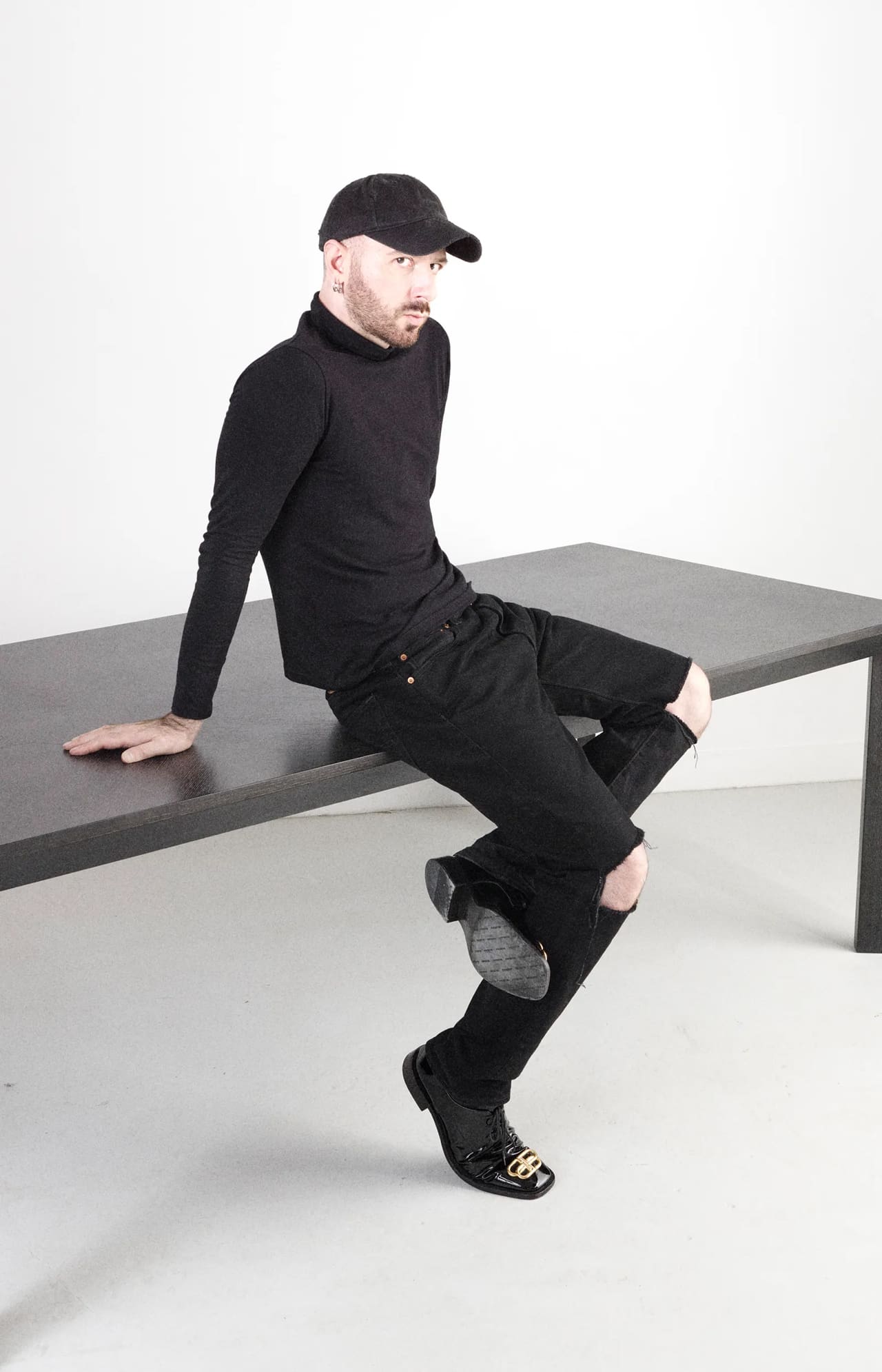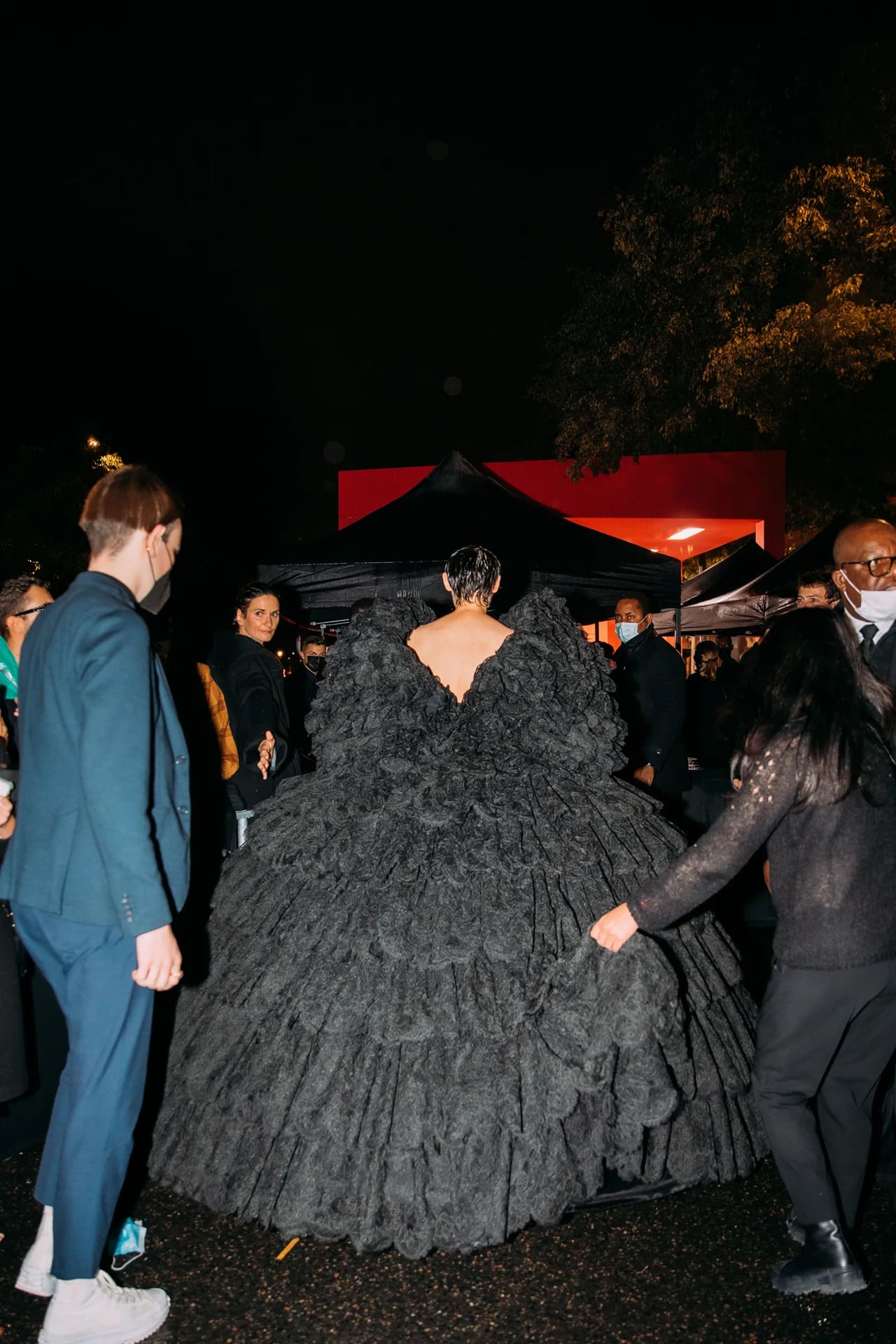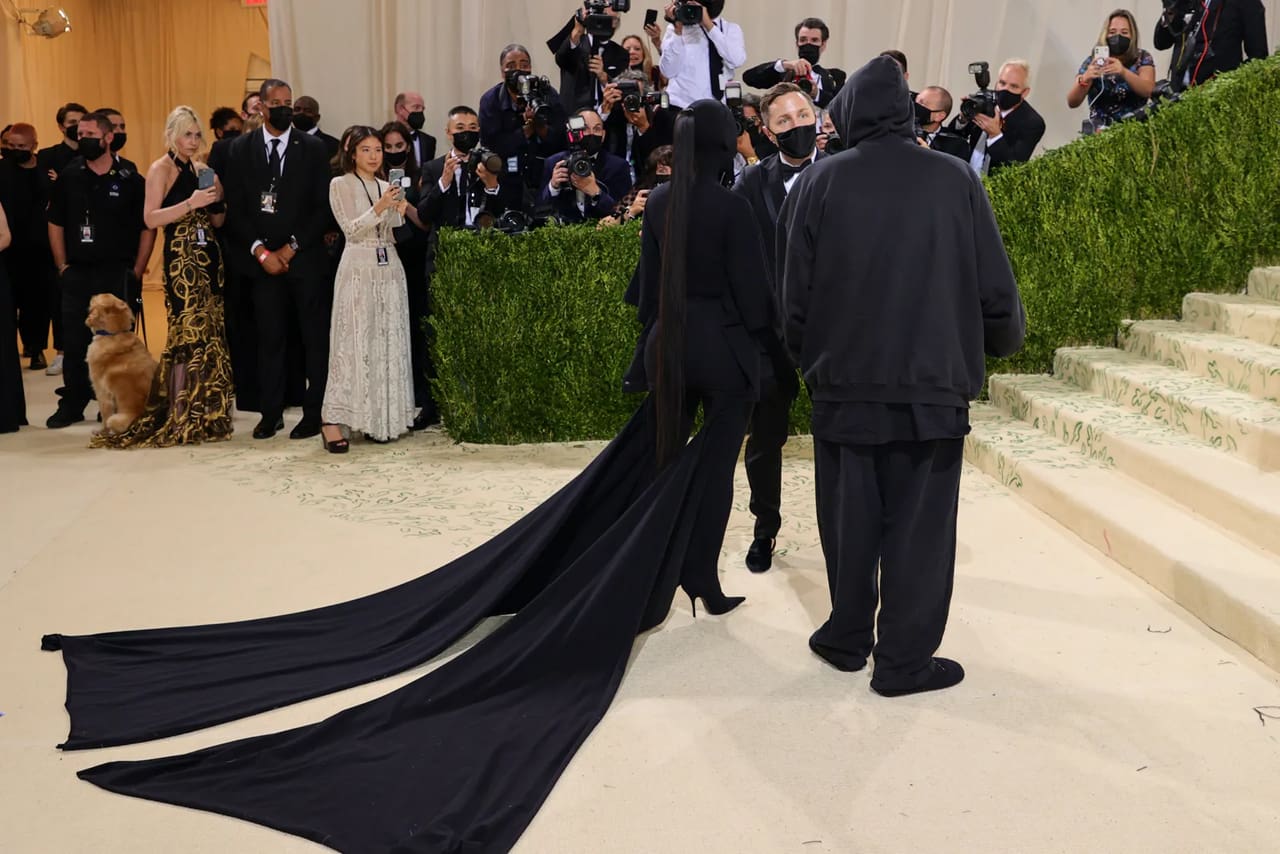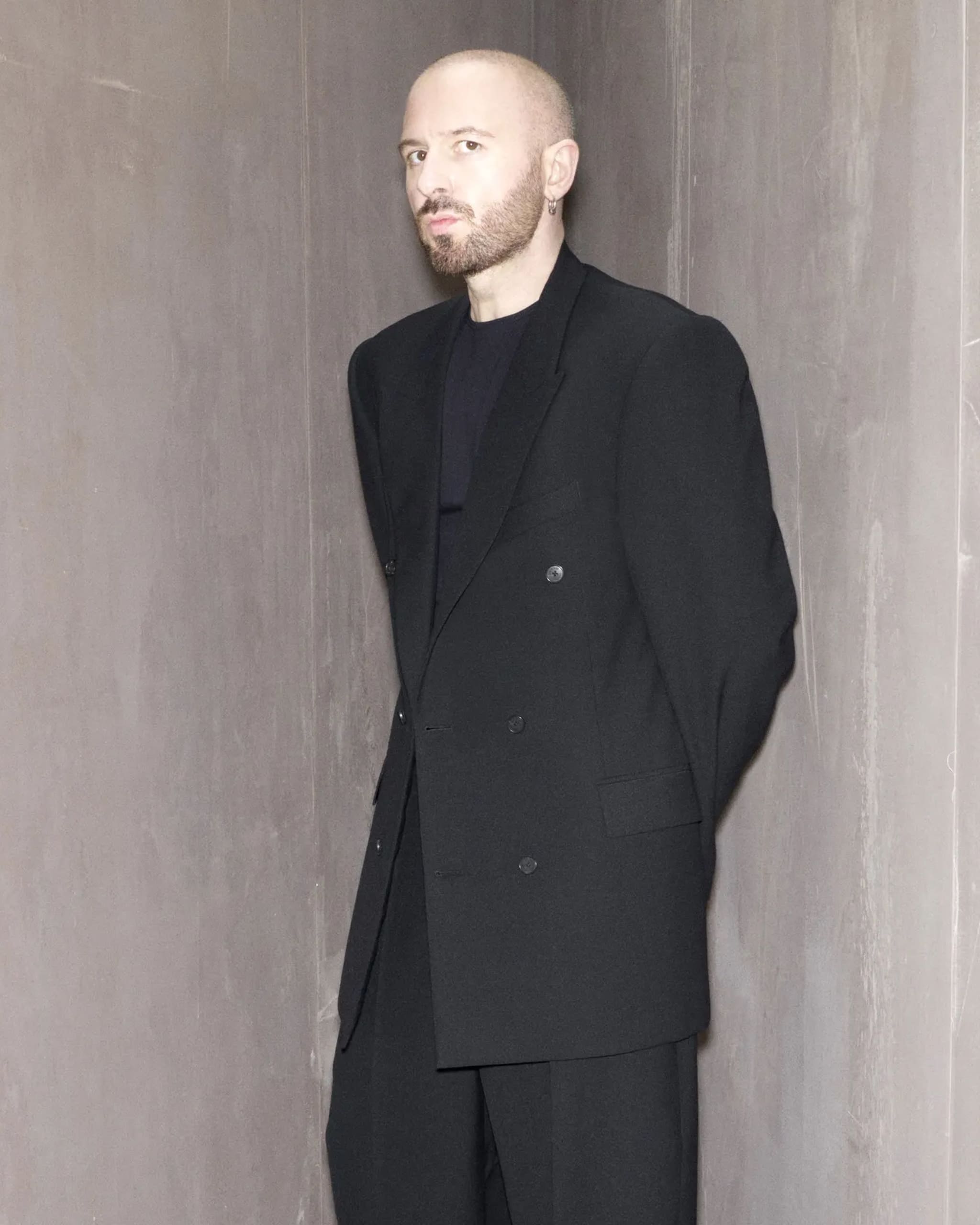BFRND / Courtesy of Balenciaga
Balenciaga’s creative director and Vetements co-founder Demna Gvasalia on building his vision and creating desire.
Strong opinions are in order when Demna is involved. His clarity of vision and powerful point of view come from a place of conviction and inner drive. Compromise and complacency aren’t part of the equation. Even though he has become one of the most influential designers of our time, success hasn’t gotten the better of him. He certainly makes for an inspiring example to young designers.
Fearlessness and conviction are qualities he also requires of the young creatives who work for him. Back to spearhead this year’s jury of the International Talent Support Awards in Trieste, Italy (where he scooped up the collection of the year award in 2004), he sat with Vogue to talk about how his early experiences helped shape his career, what he expects from a fashion education, and how triggering desire is the ultimate purpose of a fashion designer.

Vogue: In 2004 you were the recipient of the ITS collection of the year award. How did that experience impact your career?
Demna: It was almost 20 years ago! I presented a small collection of just a few looks, and from a financial POV, that prize helped me to pay for my upcoming collection. I was struggling at the time, and if I had not come to Trieste, I don’t know how I could’ve been able to continue my studies in Antwerp. But for me it was also about the confidence and recognition, because I was not confident in myself. I was rather scared and not so young—I was maybe 22, 23 years old, not 18 anymore. I had started studying fashion, and I was questioning everything, but coming to Trieste and receiving such a positive reaction gave me a kick of confidence and showed me that something you do and create, someone may actually want it. It triggers a desire, and I knew that as a fashion designer that would be my ultimate challenge: creating products that create desire.
It also gave me a lot of visibility, something that at the time I could not profit from entirely because I had to continue my studies, but it was nevertheless very important. I never did competitions because I hate that, but in Trieste the atmosphere was different. We all stayed at the Hotel Riviera outside the city. When I passed by it today, all the memories came up, the excitement about being here, the discussions about fashion, and the naivete and passion. There was no animosity between the contestants; we wished that everybody was winning and rooted for each other. That is something that rarely happens in this industry, so that part of the experience was really great.
Do you think that fashion education is important to shape a young designer’s career, or are raw talent, determination, and sheer luck enough to propel you forward?
I think that schools are important, but I think that schools are no good today, none of them. I think that fashion education is 20 years behind today’s fashion and also behind today’s world. I think the methodology used today, whether it’s based only on creativity or only on product, none of that is in balance. What I think is most important for a young creative from a fashion institution is, first of all, to learn how to find your vision and not to please your teacher to pass the next level. So there’s a fundamental issue of methodology there. I, for instance, never found my aesthetic while I was in school. I found it in the process afterward, when I started to experiment with things IRL, and I was suddenly building my vision and who I am as a designer. What I have really appreciated in my case, though—which isn’t the case in many fashion schools—was the artistic part of the education: art history, contemporary art, sculpture, nude drawing to understand the human body. I think that every fashion school should start with anatomy lessons and drawing the body in three dimensions because if a designer cannot relate to the human body and its complexity, how can you possibly be able to dress it? I was lucky enough to have this kind of preparation, but I know that many schools don’t do that. So I think fashion schools are definitely important, but not the way they are today.

The concept of creating desire comes up often in your discourse. Can you expand on that? As a fashion designer how can you create desire?
First of all you have to be your own filter. If you do not desire yourself, how can you possibly trigger desire in others? At the same time, collections have to be personal, but it cannot be just that because, in that case, it isn’t fashion anymore. If it’s too personal it becomes an art project, and I think we should be careful to distinguish fashion from an art form because while fashion is about vision, it’s also about product a lot and the way we consume. Personal stories are super important, but as a creative and visionary, you have to be inspired by the world around you. Fashion is a mirror, but it can be easy to get lost in that and say, “Look, I’m so great, now I made holes everywhere because I went through a war.” No. There must be a degree of interpretation and translation of your personal story. So going back to the desire question, I think desire is about sensibility, and you need to kind of train it to create desire, whether it’s a product, fashion show, movie, or whatever you do. I think it’s something that you have in you, and you have to train it. It’s almost like sports; from a creative POV, it’s pretty much like going to the gym. If you don’t train yourself measuring that desire or creativity, you’re never going to get there. I personally exchange ideas a lot, ask around a lot: my interns, my assistants, people I live with, even the cook! I want to know in my studio who they think is the potential consumer of something we’re working on.
How can you train yourself then?
It’s by trying and making mistakes, allowing yourself to make mistakes. Very often in fashion we do not have this space. We do not have the possibility to fail. This is a big problem; today there’s zero patience. We want it now, we want it super successful, we want the blockbuster, but this is very dangerous because in order to make something great, you have to fail many times. And the possibility to fail is such an important element that I think we need to bring back in fashion. Especially for young people, because I remember myself—how scared you are that you cannot make it because nobody cares about you, nobody is going to pay for it. So we should tell young creatives: “Hey, failing is great!” Because it’s the only way for you to succeed.

How do you choose your collaborators? What is required to be part of Demna’s magic circle?
One of the most important qualities I look for in my collaborators is the absence of fear. It’s about not being afraid to express something that might not be accepted. I love people with a point of view, hopefully not similar to mine, and I greatly appreciate the fact that they stand behind it because they believe in it and are not afraid. For my team I take people from schools and never from other brands because it’s harder for me to work with them as they need to disconnect and then reconnect to a new creative mentality. So most people from my team come either directly from a school before they graduate or else I take them in the middle of their studies and they basically learn in the process. But the most important quality is the lack of fear because fear blocks creativity, and if you’re trying to please, you’re never going to make it. You should not please. Fashion should not please.
This post was originally published on Vogue.com
